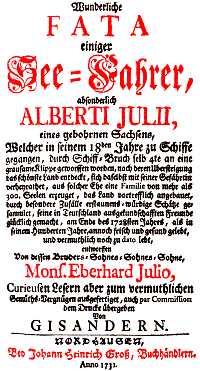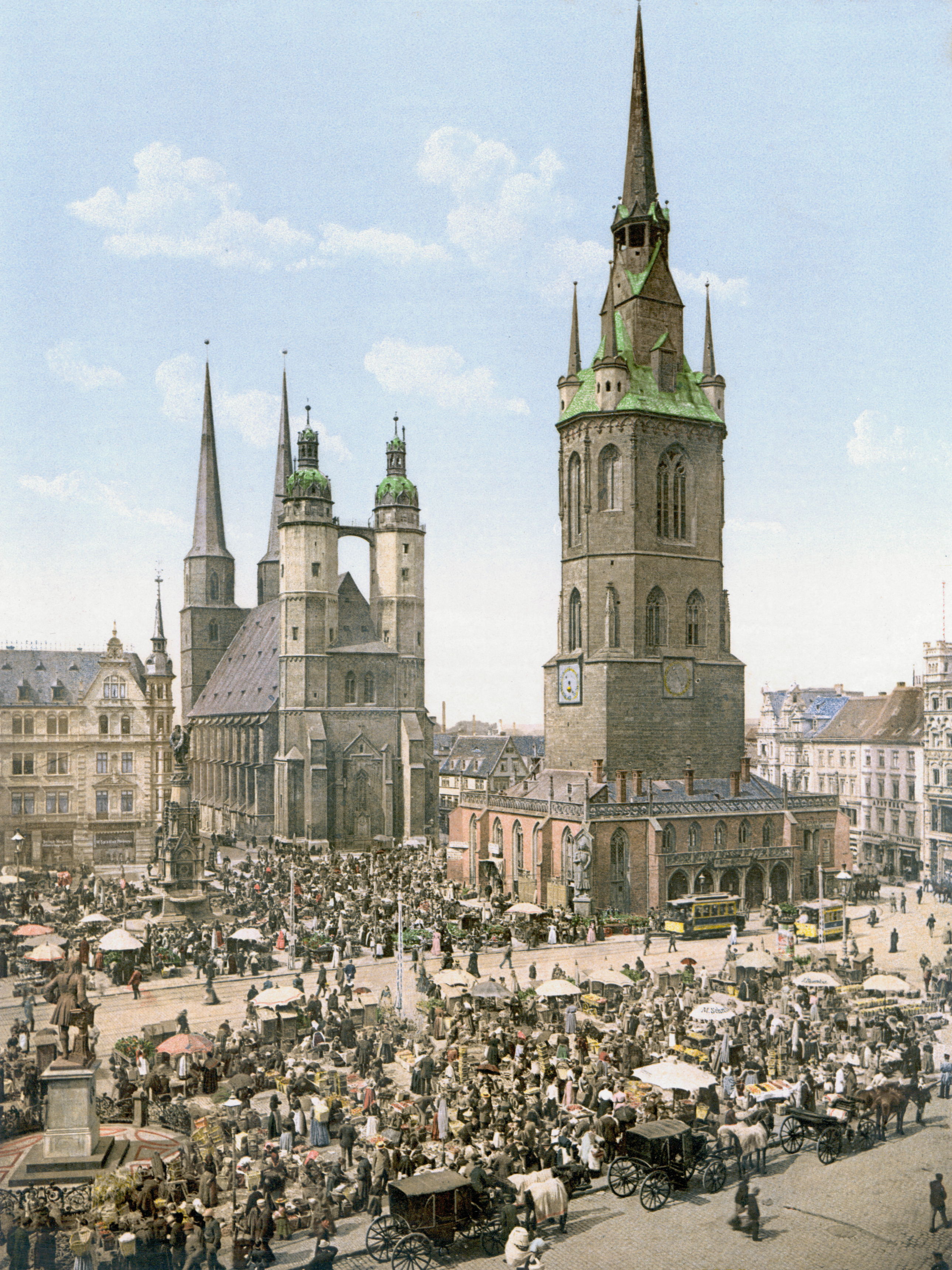|
Sandersdorf
Sandersdorf is a village and a former municipality in the district of Anhalt-Bitterfeld, in Saxony-Anhalt, Germany. Since 1 July 2009, it is part of the town Sandersdorf-Brehna. It is situated approximately 5 km west of Bitterfeld, and 27 km northeast of Halle (Saale). It is the birthplace of German author Johann Gottfried Schnabel Johann Gottfried Schnabel (November 7, 1692 – ) was a German writer best known for his novel ''Insel Felsenburg''. He published his works under the pen name Gisander. Schnabel was born in Sandersdorf near Bitterfeld, Germany. Orphaned in 1694 .... References Former municipalities in Saxony-Anhalt Sandersdorf-Brehna {{AnhaltBitterfeld-geo-stub ro:Sandersdorf ... [...More Info...] [...Related Items...] OR: [Wikipedia] [Google] [Baidu] |
Sandersdorf-Brehna
Sandersdorf-Brehna is a town in the district of Anhalt-Bitterfeld, in Saxony-Anhalt, Germany. It is situated southwest of Bitterfeld. The town was formed by the merger of the previously independent town Brehna and the municipalities Glebitzsch, Petersroda, Roitzsch and Sandersdorf, on 1 July 2009. Geography The town Sandersdorf-Brehna consists of the following ''Ortschaften'' or municipal divisions:Hauptsatzung der Stadt Sandersdorf-Brehna 26 September 2019. * * *Heideloh * [...More Info...] [...Related Items...] OR: [Wikipedia] [Google] [Baidu] |
Johann Gottfried Schnabel
Johann Gottfried Schnabel (November 7, 1692 – ) was a German writer best known for his novel ''Insel Felsenburg''. He published his works under the pen name Gisander. Schnabel was born in Sandersdorf near Bitterfeld, Germany. Orphaned in 1694, he was raised by relatives.Meid, Volker: Reclams Lexikon der deutschsprachigen Autoren, Stuttgart 2001 After an apprenticeship to a barber from 1706 to 1709, Schnabel worked as a ''Feldsher,'' a military barber-surgeon, in the regiments of Wolfenbüttel and Saxony until 1717. In this capacity he took part in the War of the Spanish Succession. In 1719, Schnabel settled as a master barber in Querfurt. From 1724 he was court barber in the County of Stolberg-Wernigerode, where he was promoted to ''valet de chambre'' in 1729 and to court agent around 1737. The year 1750 shows the last record of Schnabel's life; his death date and place are unknown. ''Insel Felsenburg'' The ''Insel Felsenburg'' (literally: Rock Castle Island) was originally ... [...More Info...] [...Related Items...] OR: [Wikipedia] [Google] [Baidu] |
Anhalt-Bitterfeld
Anhalt-Bitterfeld is a district in Saxony-Anhalt, Germany. Its capital is Köthen (Anhalt). Its area is . History This district was established by merging the former districts of Bitterfeld, Köthen and a large part of Anhalt-Zerbst as part of the reform Reform ( lat, reformo) means the improvement or amendment of what is wrong, corrupt, unsatisfactory, etc. The use of the word in this way emerges in the late 18th century and is believed to originate from Christopher Wyvill's Association movement ... of 2007. Towns and municipalities The district Anhalt-Bitterfeld consists of the following subdivisions: References History of Anhalt 2007 establishments in Germany Former states and territories of Saxony-Anhalt {{AnhaltBitterfeld-geo-stub ... [...More Info...] [...Related Items...] OR: [Wikipedia] [Google] [Baidu] |
Saxony-Anhalt
Saxony-Anhalt (german: Sachsen-Anhalt ; nds, Sassen-Anholt) is a state of Germany, bordering the states of Brandenburg, Saxony, Thuringia and Lower Saxony. It covers an area of and has a population of 2.18 million inhabitants, making it the 8th-largest state in Germany by area and the 11th-largest by population. Its capital is Magdeburg and its largest city is Halle (Saale). The state of Saxony-Anhalt was formed in July 1945 after World War II, when the Soviet army administration in Allied-occupied Germany formed it from the former Prussian Province of Saxony and the Free State of Anhalt. Saxony-Anhalt became part of the German Democratic Republic in 1949, but was dissolved in 1952 during administrative reforms and its territory divided into the districts of Halle and Magdeburg. Following German reunification the state of Saxony-Anhalt was re-established in 1990 and became one of the new states of the Federal Republic of Germany. Saxony-Anhalt is renowned for its ri ... [...More Info...] [...Related Items...] OR: [Wikipedia] [Google] [Baidu] |
Germany
Germany, officially the Federal Republic of Germany (FRG),, is a country in Central Europe. It is the most populous member state of the European Union. Germany lies between the Baltic and North Sea to the north and the Alps to the south. Its 16 constituent states have a total population of over 84 million in an area of . It borders Denmark to the north, Poland and Czechia to the east, Austria and Switzerland to the south, and France, Luxembourg, Belgium, and the Netherlands to the west. The nation's capital and most populous city is Berlin and its main financial centre is Frankfurt; the largest urban area is the Ruhr. Settlement in what is now Germany began in the Lower Paleolithic, with various tribes inhabiting it from the Neolithic onward, chiefly the Celts. Various Germanic tribes have inhabited the northern parts of modern Germany since classical antiquity. A region named Germania was documented before AD 100. In 962, the Kingdom of Germany formed the ... [...More Info...] [...Related Items...] OR: [Wikipedia] [Google] [Baidu] |
Bitterfeld
Bitterfeld () is a town in the district of Anhalt-Bitterfeld, Saxony-Anhalt, Germany. Since 1 July 2007 it has been part of the town of Bitterfeld-Wolfen. It is situated approximately 25 km south of Dessau, and 30 km northeast of Halle (Saale). At the end of 2016, it had 40,964 inhabitants. History and description The name Bitterfeld most likely comes from the Middle High German words ''bitter'' and ''Feld'' and so means "boggy land". Bitterfeld was built by a colony of Flemish immigrants in 1153. The first documentary mention is from 1224. It was captured by the landgrave of Meissen in 1476, and belonged thenceforth to Saxony, until it was ceded to Prussia in 1815. By 1900, Bitterfeld station was an important junction of the Berlin–Halle and the Magdeburg–Leipzig railways. The population at that time was 11,839; it manufactured drainpipes, paper roofing, and machinery, and had sawmills. There were also several coal mines in the vicinity. Owing to its pleasant ... [...More Info...] [...Related Items...] OR: [Wikipedia] [Google] [Baidu] |
Halle (Saale)
Halle (Saale), or simply Halle (; from the 15th to the 17th century: ''Hall in Sachsen''; until the beginning of the 20th century: ''Halle an der Saale'' ; from 1965 to 1995: ''Halle/Saale'') is the largest city of the German state of Saxony-Anhalt, the fifth most populous city in the area of former East Germany after ( East) Berlin, Leipzig, Dresden and Chemnitz, as well as the 31st largest city of Germany, and with around 239,000 inhabitants, it is slightly more populous than the state capital of Magdeburg. Together with Leipzig, the largest city of Saxony, Halle forms the polycentric Leipzig-Halle conurbation. Between the two cities, in Schkeuditz, lies Leipzig/Halle International Airport. The Leipzig-Halle conurbation is at the heart of the larger Central German Metropolitan Region. Halle lies in the south of Saxony-Anhalt, in the Leipzig Bay, the southernmost part of the North German Plain, on the River Saale (a tributary of the Elbe), which is the third longest rive ... [...More Info...] [...Related Items...] OR: [Wikipedia] [Google] [Baidu] |
Former Municipalities In Saxony-Anhalt
A former is an object, such as a template, gauge or cutting die, which is used to form something such as a boat's hull. Typically, a former gives shape to a structure that may have complex curvature. A former may become an integral part of the finished structure, as in an aircraft fuselage, or it may be removable, being using in the construction process and then discarded or re-used. Aircraft formers Formers are used in the construction of aircraft fuselage, of which a typical fuselage has a series from the nose to the empennage, typically perpendicular to the longitudinal axis of the aircraft. The primary purpose of formers is to establish the shape of the fuselage and reduce the column length of stringers to prevent instability. Formers are typically attached to longerons, which support the skin of the aircraft. The "former-and-longeron" technique (also called stations and stringers) was adopted from boat construction, and was typical of light aircraft built until th ... [...More Info...] [...Related Items...] OR: [Wikipedia] [Google] [Baidu] |





